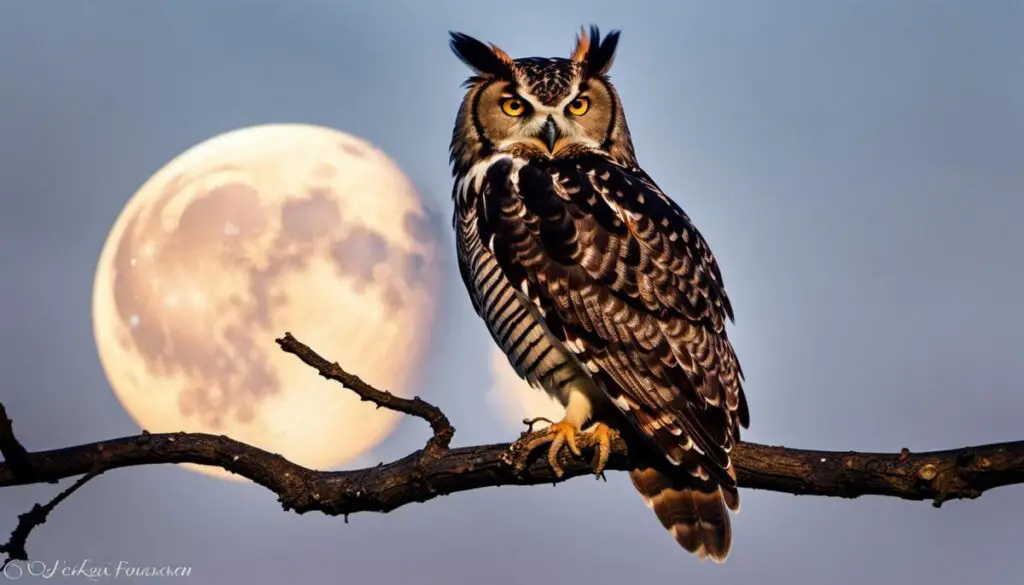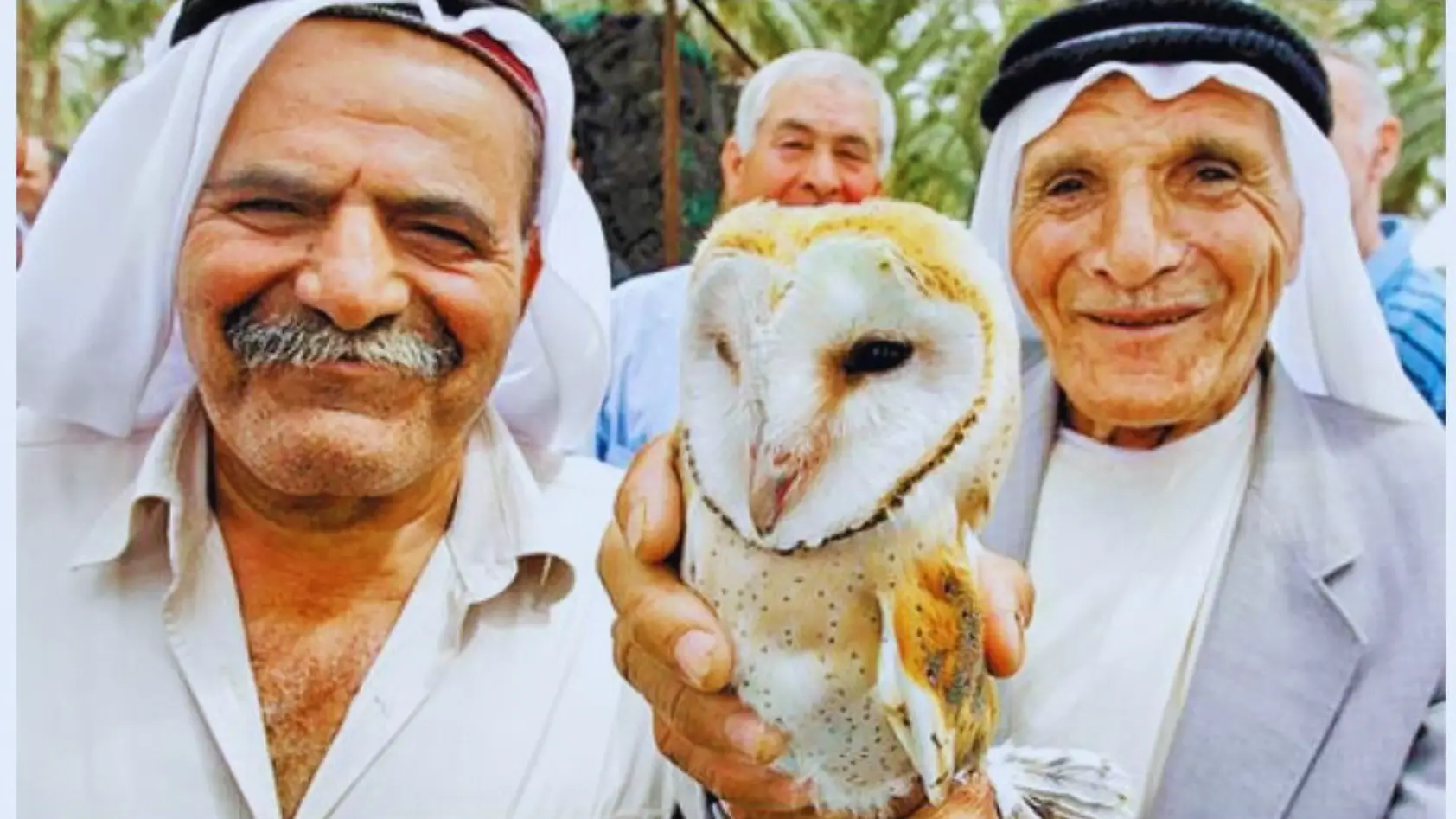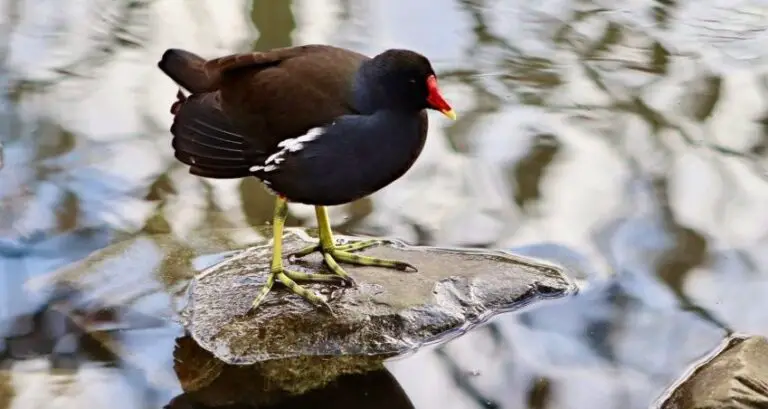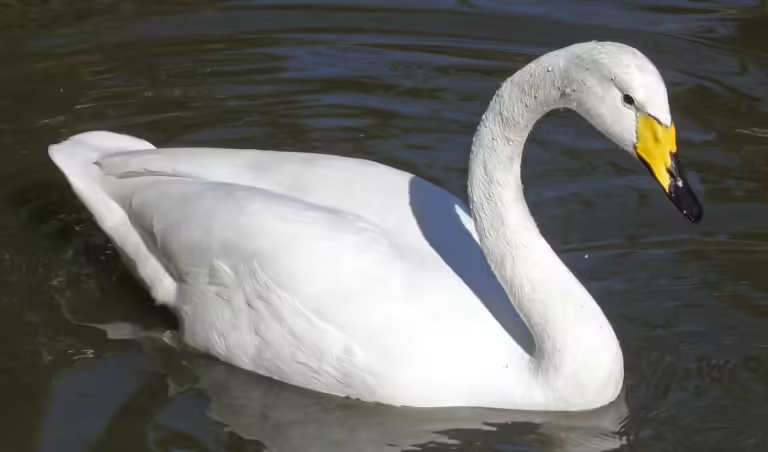Are Owls Bad Luck? Separating Myth from Reality in Avian Folklore
Do you ever find yourself gripping your lucky rabbit’s foot a little tighter when you hear the hoot of an owl in the night? You’re not alone. For centuries, owls have been associated with bad luck and omens of doom in folklore and superstition. But is this belief rooted in reality, or is it just another case of avian myth?
In this article, we delve into the cultural significance of owls and explore the origins of the ‘owls as bad luck’ belief. We’ll also uncover the truth about owl behavior and their vital role in ecosystems. Contrary to popular belief, owls are not harbingers of misfortune, but rather fascinating creatures with unique adaptations and characteristics.
Join us as we separate fact from fiction and shed light on the positive associations with owls in folklore. Together, let’s embrace the beauty and mystery of these majestic birds and work towards their conservation and protection. It’s time to dispel the superstitions and appreciate owls for the remarkable creatures they truly are.
Key Takeaways
- Owls have negative perceptions in folklore and superstition, being associated with bad luck and omens of doom.
- However, owls play a vital role in ecosystems by controlling rodent populations and preventing damage to crops.
- Owls have unique adaptations and characteristics that give them a distinct advantage in hunting, such as silent flight, excellent hearing, and forward-facing eyes.
- Despite the negative stereotypes, owls have positive associations in mythology and religion, symbolizing wisdom, protection, and good fortune.
The Cultural Significance of Owls
Did you know that owls have played a significant role in various cultures throughout history? These enigmatic birds have captured the imagination of people across the globe, inspiring a myriad of legends, myths, and superstitions.
Owls have often been associated with wisdom and knowledge, and this belief can be traced back to ancient civilizations such as the Greeks and the Romans. In Greek mythology, the goddess Athena was often depicted with an owl perched on her shoulder, symbolizing her wisdom and foresight. The Romans also revered owls, associating them with intelligence and protection.
In many Native American cultures, owls were believed to possess spiritual powers and were considered messengers between the human and spirit worlds.
However, not all cultures view owls in a positive light. In some folklore, owls are seen as harbingers of death and misfortune. This negative perception may stem from their nocturnal habits and haunting calls, which can be unsettling to some. Additionally, the silent flight of owls and their ability to rotate their heads 270 degrees have led to associations with witchcraft and sorcery in certain cultures.
It is important to note that these beliefs are rooted in folklore and superstition, rather than factual evidence. Owls are magnificent creatures that play a vital role in maintaining the balance of ecosystems, controlling rodent populations, and serving as indicators of environmental health.
So next time you encounter an owl, remember to appreciate its beauty and significance, and separate the myth from the reality.
The Origins of the “Owls as Bad Luck” Belief
Explore the mysterious origins of the belief that these nocturnal creatures bring misfortune, and delve into the depths of ancient cultures and superstitions. The belief that owls are bad luck has been ingrained in human consciousness for centuries. Here are four fascinating reasons why this belief came to be:
- Association with Death: Owls have long been associated with death and the afterlife. In ancient Greece, they were considered companions of the goddess of wisdom, Athena, but also symbols of death. This association continued in Roman mythology, where owls were believed to be messengers of death.
- Nocturnal Nature: Owls are nocturnal creatures, often associated with darkness and the unknown. This nocturnal behavior led to the belief that they were harbingers of doom and misfortune.
- Superstitions and Folklore: Throughout history, owls have been associated with various superstitions and folklore. In some cultures, hearing an owl’s hoot was believed to foretell imminent death or illness. Owls were also seen as omens of bad luck or disaster.
- Cultural Influences: The negative perception of owls can also be attributed to cultural influences. In some parts of the world, owls are seen as symbols of witchcraft or associated with evil spirits.
While these reasons may shed light on the origins of the belief, it’s important to remember that owls are simply fascinating creatures of the night, playing essential roles in ecosystems worldwide. So next time you hear an owl hoot, appreciate the beauty and wonder of nature, rather than fearing it.
The Role of Owls in Ecosystems
Owls play a crucial role in ecosystems as predators, keeping populations of rodents and other small mammals in check. They are highly skilled hunters, using their sharp talons and keen eyesight to catch their prey.
By controlling pest populations, owls help maintain the balance of the ecosystem and prevent damage to crops and other valuable resources.
Ecological Importance of Owls as Predators

Owls play a crucial role in maintaining the balance of ecosystems as skilled predators. These majestic birds are highly efficient hunters, thanks to their exceptional vision, silent flight, and sharp talons.
Owls primarily feed on small mammals, such as mice, rats, and voles, which helps control their populations. By doing so, they prevent these prey species from overpopulating and causing damage to crops and vegetation.
Additionally, owls also prey on insects, reptiles, and even other birds, further contributing to the regulation of various populations within the ecosystem. Their presence keeps the delicate balance intact, ensuring that no particular species dominates.
So the next time you hear the hoot of an owl, remember that they are not just mysterious creatures of the night but essential guardians of ecological harmony.
Owls’ Contributions to Pest Control
One interesting fact is that owls’ hunting skills are so effective that a single barn owl can consume up to 1,000 rodents in a year.
Owls are known for their incredible pest control abilities, making them valuable assets to farmers and homeowners alike.
These birds of prey have the ability to locate and capture rodents with great precision, thanks to their exceptional eyesight and hearing.
Owls’ silent flight allows them to sneak up on their prey undetected, ensuring a higher success rate in capturing rodents.
By feeding on pests like mice and rats, owls help to keep their populations in check, reducing the need for harmful pesticides.
Their contribution to pest control not only benefits humans but also helps to maintain the balance of ecosystems.
Owls’ Adaptations and Unique Characteristics
When it comes to owls’ adaptations and unique characteristics, you’ll be amazed by their silent flight and excellent hearing.
Owls are known for their ability to fly silently through the night, which allows them to sneak up on their prey without being detected.
Their excellent hearing also plays a crucial role in their hunting techniques, as they can locate their prey even in complete darkness.
So if you want to learn more about these fascinating features, read on!
Silent Flight and Excellent Hearing
Contrary to popular belief, owls possess the remarkable ability of silent flight and impeccable hearing. While other birds create noise with their wingbeats, owls have specialized feathers that allow them to fly silently through the night, making them deadly hunters. This adaptation gives them a distinct advantage over their prey, as they can swoop down undetected and capture their target with precision.
Additionally, owls have exceptional hearing capabilities. Their large, forward-facing eyes allow them to locate prey visually, but their ears are equally important in hunting. Unlike humans, who have symmetrical ears, an owl’s ears are positioned at different heights on its head. This asymmetry enables them to accurately pinpoint the location of a sound and determine the distance and direction of their prey.
In summary, owls’ silent flight and excellent hearing make them highly efficient predators of the night, debunking the notion that they bring bad luck.
Nocturnal Behavior and Hunting Techniques
With their ability to fly silently and their exceptional hearing, owls exhibit an impressive array of nocturnal behaviors and hunting techniques.
Owls are known for being efficient predators, using their keen eyesight and silent flight to swoop down upon their unsuspecting prey. They have the ability to rotate their heads up to 270 degrees, allowing them to scan their surroundings and pinpoint the location of their next meal.
Once they have located their prey, owls use their powerful talons and sharp beaks to capture and kill their victims swiftly and efficiently. Owls are also known for their ability to camouflage themselves within their surroundings, making them even more effective at hunting.
So, the next time you hear the hoot of an owl in the night, remember that these fascinating creatures are masters of the darkness, relying on their incredible nocturnal behaviors and hunting techniques to survive.
Positive Associations with Owls in Folklore
Despite their reputation for being associated with darkness and mystery, owls have positive associations in folklore. They are seen as wise and knowledgeable creatures. In Greek mythology, the owl was the sacred bird of Athena, the goddess of wisdom, symbolizing her wisdom and intelligence. Owls have also been associated with protection and good fortune in various cultures around the world. They are believed to bring luck and prosperity, and their presence is considered a sign of good things to come. Additionally, owls have been seen as symbols of intuition and insight. They have the ability to see in the darkness and navigate through the night with ease.
To evoke emotion in the audience, consider the following bullet list:
- Owls are often depicted as wise and mysterious creatures, captivating our imagination.
- Their haunting hoots echo through the night, creating an eerie yet enchanting atmosphere.
- The piercing gaze of their large, round eyes can be both captivating and intimidating.
- Owls’ silent flight has a magical quality, as if they are gliding through the air with grace and stealth.
- Their unique appearance, with feathers that resemble a cloak, adds to their mystique and allure.
These positive associations in folklore remind us that owls are not just creatures of the night, but also symbols of wisdom, protection, and good fortune. So, the next time you see an owl, embrace the beauty and mystery it represents, and remember that there is more to these fascinating creatures than meets the eye.
Owls in Mythology and Religion

Embrace the enchantment of owls in mythology and religion, as they hold a captivating presence in ancient tales and spiritual beliefs.
In various mythologies around the world, owls are often associated with wisdom, knowledge, and protection. In Greek mythology, the goddess Athena, known for her wisdom, was often depicted with an owl as her companion. The owl symbolized her ability to see through darkness and reveal hidden truths.
In Native American cultures, owls were seen as messengers from the spirit world, bringing guidance and warnings. They were also believed to possess supernatural powers and were revered for their ability to navigate through the night.
Religion also has its fair share of owl symbolism. In Hinduism, the owl is associated with the goddess Lakshmi, who represents wealth, fortune, and prosperity. The owl is seen as a symbol of her watchful presence and ability to bring abundance.
In Christianity, however, owls have been associated with darkness and evil, often representing death and destruction.
Despite these contrasting beliefs, one thing remains consistent: owls have a significant role in mythology and religion. They continue to inspire awe and fascination, reminding us of the mystical and spiritual aspects of the natural world.
So, next time you encounter an owl, remember the rich mythology and spiritual significance it holds.
Owls’ Positive Impact on Human Lives
You’ll be amazed by how owls positively impact your life. From their ability to control rodent populations to their mesmerizing presence in the night sky.
- Owls are natural pest controllers. They have an incredible hunting ability and can consume a large number of rodents, helping to keep their populations in check. By doing so, they play a crucial role in maintaining the balance of ecosystems and reducing the spread of diseases carried by rodents.
- Owls are symbols of wisdom and intelligence in many cultures. Their mysterious and captivating presence in the night sky has inspired humans for centuries. Their hooting sounds and unique calls add a touch of enchantment to the darkness, creating a sense of wonder and awe.
- Owls are fascinating creatures to observe. Their silent flight, keen eyesight, and exceptional hearing make them excellent hunters. Watching an owl in action, swooping down with precision and grace, can be a truly mesmerizing experience.
- Owls have been associated with good luck and protection in some cultures. They are believed to bring wisdom, guidance, and foresight to those who encounter them. In Japan, for example, the owl is considered a symbol of good fortune and is believed to ward off evil spirits.
- Owls have become popular subjects in literature, art, and folklore. From children’s books to ancient myths, these majestic birds have captured the imaginations of people worldwide. Their positive impact on human lives goes beyond their ecological role and extends into the realm of culture and inspiration.
The Truth About Owl Behavior
Prepare to be astonished by the fascinating truth about how owls behave, leaving you in awe of their extraordinary abilities and captivating nature. Owls are truly remarkable creatures, and their behavior is far from the negative stereotypes often associated with them. Contrary to popular belief, owls are not evil or malicious. They are actually quite intelligent and adaptable, with a range of behaviors that are both interesting and beneficial.
One of the most fascinating aspects of owl behavior is their hunting technique. Owls are incredibly skilled predators, able to locate their prey with remarkable precision. Their ability to fly silently allows them to sneak up on unsuspecting prey without making a sound. Once they have located their target, owls use their sharp talons and powerful beaks to capture and subdue their prey.
Another intriguing behavior of owls is their ability to rotate their heads almost 270 degrees. This incredible neck flexibility allows them to scan their surroundings without needing to move their entire body. It gives them a distinct advantage when it comes to spotting potential threats or prey.
Additionally, owls are known for their exceptional camouflage skills. Their feathers are specially adapted to blend in with their surroundings, making them virtually invisible to their prey. This camouflage also helps them hide from predators, ensuring their survival in the wild.
In conclusion, owls are not bad luck or omens of doom. They are intelligent, adaptable, and fascinating creatures. Their unique hunting techniques, incredible neck flexibility, and exceptional camouflage skills make them truly awe-inspiring. So, the next time you encounter an owl, take a moment to appreciate their extraordinary behavior and the beauty they bring to the natural world.
Conservation and Protection of Owls
The conservation and protection of these magnificent creatures is of utmost importance in order to ensure their continued existence in the wild. Owls play a vital role in maintaining the balance of ecosystems, making their conservation efforts crucial.
One of the key factors in owl conservation is habitat preservation. Owls require specific habitats, such as forests, grasslands, and wetlands, to thrive. Destruction of these habitats through deforestation and urbanization can have a devastating impact on owl populations. By protecting and preserving their natural habitats, we can provide owls with the necessary resources they need to survive and reproduce.
Another important aspect of owl conservation is raising awareness about the threats they face. Illegal hunting and trapping, as well as the illegal pet trade, pose significant risks to owl populations. By educating the public about the importance of owls and the consequences of these actions, we can help prevent further harm to these birds.
Additionally, implementing conservation programs and regulations is crucial for their protection. This includes creating protected areas, enforcing laws against hunting and trading, and promoting sustainable land use practices. Collaborative efforts between governments, conservation organizations, and local communities are essential in ensuring the long-term survival of owls.
In conclusion, the conservation and protection of owls is vital for their survival. By preserving their habitats, raising awareness, and implementing effective conservation measures, we can help secure a future for these incredible birds in the wild.
The Need for Education and Awareness
When it comes to owls, it’s important to dispel myths and stereotypes that have been perpetuated throughout history. By promoting respect and understanding, we can help to educate others about the true nature of these magnificent birds.
By debunking superstitions and fostering a deeper appreciation for owls, we can ensure their conservation and protection for future generations to enjoy.
Dispelling Myths and Stereotypes
Imagine yourself soaring through the night sky, surrounded by the eerie hoots and silent wings of these mystical creatures, debunking all the myths and stereotypes that have plagued owls for centuries.
Contrary to popular belief, owls are not bad luck. They do not possess any supernatural powers or bring misfortune upon those who encounter them.
In fact, owls are fascinating creatures with unique adaptations that make them efficient hunters and valuable members of their ecosystems. They play a crucial role in controlling rodent populations and maintaining a balanced ecosystem.
Owls are not omens of death or symbols of darkness; they are simply birds of prey, perfectly adapted to their nocturnal lifestyle.
By dispelling these myths and stereotypes, we can appreciate the true beauty and importance of these majestic creatures.
Promoting Respect and Understanding
By gaining a deeper understanding and respecting the unique adaptations and behaviors of these majestic creatures, you can truly appreciate the invaluable role they play in maintaining the delicate balance of their ecosystems.
Owls are not bad luck, but rather fascinating creatures with remarkable abilities. They have adapted to be silent flyers, allowing them to surprise their prey with stealth. Their large eyes provide exceptional night vision, and their ability to rotate their heads up to 270 degrees gives them a wide field of view.
Owls are skilled hunters, feeding on a variety of small mammals, birds, and even insects. They are also important in controlling rodent populations, which helps to prevent the spread of diseases and protect crops.
By promoting respect and understanding for owls, we can dispel the myths and stereotypes surrounding them and appreciate the vital role they play in our ecosystems.
Embracing the Beauty and Mystery of Owls
Owls are truly fascinating creatures, with their unique characteristics and mysterious nature.
Appreciating their beauty and understanding their role in the ecosystem is key to encouraging conservation efforts.
By promoting coexistence and understanding, we can ensure the future of these magnificent birds and the important role they play in our environment.
Appreciating Owls’ Unique Characteristics
Step into the world of owls and discover the captivating secrets hidden within their silent flight. Owls possess unique characteristics that set them apart from other birds.
One of their most distinctive features is their incredible night vision. Their large eyes are adapted to gather as much light as possible, allowing them to see in almost complete darkness.
Additionally, owls have exceptional hearing capabilities. They possess asymmetrical ear openings, which help them locate prey with pinpoint accuracy. Their ability to rotate their heads almost 270 degrees also adds to their hunting prowess.
Another fascinating characteristic is their silent flight. Owls have specialized feathers that reduce turbulence and muffle the sound of their wings, enabling them to swoop down on their unsuspecting prey undetected.
These remarkable features make owls truly unique and worthy of our appreciation.
Encouraging Conservation Efforts and Coexistence
Now that you have a better understanding of owls’ unique characteristics, it’s time to discuss the importance of conservation efforts and coexistence with these magnificent creatures. By promoting conservation, we can ensure that owls continue to thrive in their natural habitats and contribute to a balanced ecosystem. Additionally, fostering coexistence means finding ways to peacefully share our surroundings with owls, without causing harm or disturbance to them. To help you understand the significance of these efforts, let’s break it down into a relatable table:
| Conservation Efforts | Coexistence Tips | Benefits |
|---|---|---|
| Protecting habitats | Minimizing noise | Preservation |
| Reducing pollution | Avoiding disturbance | Biodiversity |
| Educating communities | Providing roosting | Pest control |
| Supporting research | Creating nesting | Ecological balance |
By implementing these strategies, we can create a harmonious relationship with owls and appreciate their beauty while debunking the myth of owls being bad luck.
Are Owls Bad luck? FAQs
How many different species of owls are there?
There are over 200 different species of owls in the world. These magnificent birds come in various sizes, colors, and habitats, making them a diverse group.
What is the average lifespan of an owl?
On average, an owl’s lifespan is around 15 years. However, some species can live up to 25 years or more! So, while owls may not bring bad luck, they sure know how to defy the odds and live a long life.
How far can owls turn their heads?
Owls can turn their heads up to 270 degrees, allowing them to see in almost every direction. Their flexible necks have twice as many vertebrae as humans, enabling this incredible range of motion.
Do owls have any natural predators?
Yes, owls have natural predators such as larger birds of prey like eagles and hawks, as well as mammals like foxes and raccoons. They rely on their camouflage and flight abilities to avoid them.
Can owls see in the dark?
Of course owls can see in the dark! They have exceptional night vision, thanks to their large eyes and specialized retinas. It’s like they have their own built-in night vision goggles!
Conclusion
Are owls bad luck? Separating myth from reality in avian folklore.
Now that we’ve delved into the world of avian folklore, it’s clear that the belief of owls being bad luck is nothing more than a myth.
Owls play a crucial role in ecosystems, showcasing their adaptability and unique characteristics.
In fact, they have positive associations in various cultures and folklore.
It’s important for us to educate ourselves and protect these magnificent creatures.
So, next time you hear the hoot of an owl, embrace the beauty and mystery it brings, knowing that they are not a symbol of bad luck, but rather a symbol of nature’s wonders.













